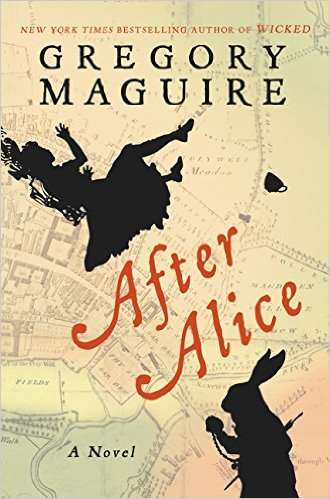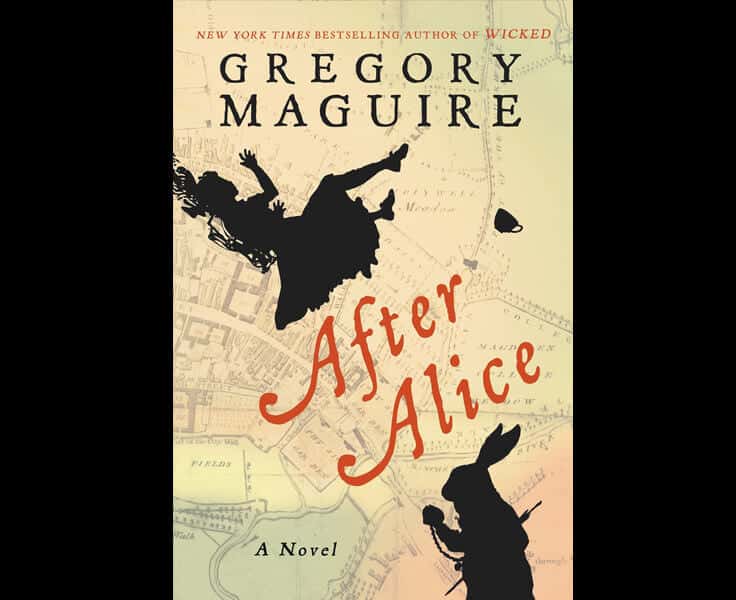After Alice by Gregory Maguire
From Wicked: The Life and Times of the Wicked Witch of the West to Confessions of an Ugly Stepsister, Gregory Maguire is the king of fairytale retellings. In his latest book, After Alice (William Morrow; October 27, 2015) he tackles the bizarre and clever world of Alice in Wonderland.
While we all remember the curious Alice, it’s tougher to remember her friend Ada, who’s only mentioned in one line of Lewis Carroll’s classic novel. “‘I’m sure I’m not Ada,’ [Alice] said, ‘for her hair goes in such long ringlets, and mine doesn’t go in ringlets at all.’” For most, this would be a throwaway line, a character who doesn’t matter much in the long run. But for Maguire, a whole story blossomed in that one simple mention.
 After Alice tells the story of Ada, Alice’s best friend, who tumbles down the rabbit hole after her. While Alice is having her adventures in Wonderland, Ada is having her own—and trying to return Alice to the life she left behind. BookTrib chatted with Maguire in 2014 about the publication of his book, Egg & Spoon. This time we spoke to him about the world of Wonderland and what comes next for the fairytale aficionado:
After Alice tells the story of Ada, Alice’s best friend, who tumbles down the rabbit hole after her. While Alice is having her adventures in Wonderland, Ada is having her own—and trying to return Alice to the life she left behind. BookTrib chatted with Maguire in 2014 about the publication of his book, Egg & Spoon. This time we spoke to him about the world of Wonderland and what comes next for the fairytale aficionado:
BookTrib: What made you choose Alice in Wonderland as the basis for this latest book?
Gregory Maguire: The book was inspired by Alice in Wonderland, so in fact Lewis Carroll chose the themes and topics: I just took dictation 150 years later, through my own imagination.
BT: Ada and Alice seem similar in certain ways, specifically in how curious they both are. What do you think separates the two characters?
GM: Alice is a little more simple, more innocent. Ada, who has scoliosis of some sort, is buckled and punished by her corrective iron spine. She has suffered more, has seen more of how the world contorts itself unpleasantly, and in some ways she is therefore better equipped to survive Wonderland.
BT: There’s a theme in your work of finding the underdeveloped characters, expanding their stories and giving them a depth they don’t usually have in the original work. What do you think draws you to these specific marginalized characters?
GM: Primarily I think of my books as homages to the great works of childhood. Alice in Wonderland lives still in my imagination and in my mind, so to “play” with the material as it appears to me now is not much different I think than Mozart “playing” with a Haydn melody, or Picasso painting something “after Velasquez.” Not that I’m Mozart or Picasso. I’m just a kid noodling around under the dining room table with my toys while the grownups blather on.
BT: It must have been fun to dive into Wonderland. What was your favorite part of writing within Carroll’s world?
GM: I was worried a little that the characters of Lewis Carroll would fail me—they are so themselves in his work. But they seemed to rear off the page and offer themselves to me with freshness and with consistency. I think the only character who suffers a bit of a character change is my iteration of the Cheshire Cat—to me he is something of the ghost of a cat rather than a cat itself. A little scary.
BT: Can you tell us anything about your next project?
GM: I’m never sure how many more stories I have in me, but I confess I have begun something that begins in a dark Bavarian forest in the first decades of the 19th century. You can take a guess if you like…





